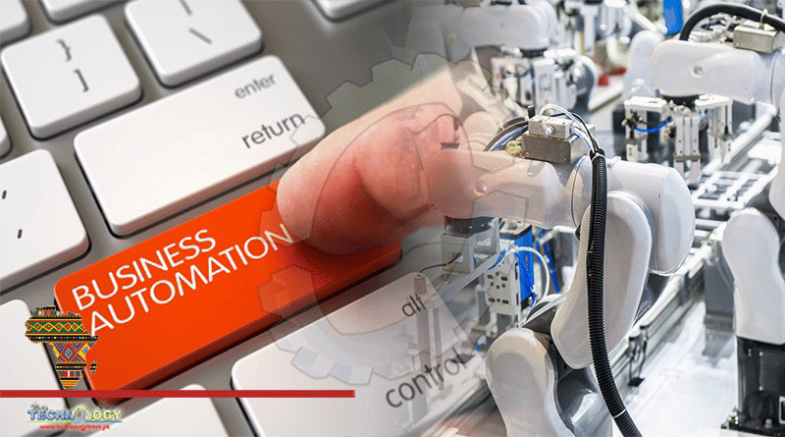The increasing use of digitization and automation technologies has great power to improve efficiency and productivity of economic activity

The increasing use of digitization and automation technologies has great power to improve efficiency and productivity; But the real challenge is to ensure that these automation technologies help address the main risks that threaten sustainability, and that stakeholders understand that success will prolong the life of mines and the associated economic activity.
A social license to operate retains its top spot in management advice on the 10 most important risks and opportunities for EY’s mining and metallurgical industry.
This article first appeared in Mining Elites in Africa 2021 digimag here or subscribe to receive a printed copy here
The economic lockdown made necessary by the COVID-19 pandemic, in which millions of jobs were reportedly lost, will only mean greater poverty – including in communities around the mines.
A holistic and integrated approach to the spectrum of mine challenges and risks is more important today than ever.
Efficiency for longevity
At a high level, digitization and automation technologies promise to make a crucial difference where it really matters to South Africa: sustaining current employment opportunities in the sector.
In a mature sector like ours, and in a difficult economic environment, we are not currently creating many new mineral projects that could replace our old mines.
Rather, we are seeing a steady aging of operations as the inevitable shutdown approaches.
It is in the nature of mining; the mineral deposit is still finite and can only be mined as long as its income exceeds its costs.
An immediate priority is therefore to increase efficiency and reduce costs while improving safety levels – allowing mining operations to continue in deeper or lower quality resources.
Safe and distant
Technology certainly helps us to achieve this, even if the pace of implementation is sometimes uneven.
The remote-controlled equipment allows drilling, loading and transportation, reducing the manual labor required and thus reducing the risks to safety and health.
Equipment and employees can be tracked throughout an operation and can communicate more easily, which improves safety and productivity.
Above ground, a South African mine is testing the use of hydrogen to power transport trucks, reducing the carbon footprint and costs.
Digital technology improves planning and monitoring, making operations safer and more efficient.
Global collaboration between mines, consultants and universities has leveraged seismic wave research into valuable applications that improve site safety – for example by distinguishing vibrations caused by blasting from those indicating movement of pit structures.
Similar work also helps improve earthquakes site response modeling approaches for mines.
Sensor power
The use of digitally capable sensors in almost all aspects of mining and processing today enables the collection of “big data” for processing and analysis.
As we improve our ability to extract valuable insight from this data, all operations can be streamlined. Advances in geo-metallurgical modeling, for example, can provide detailed geological data to improve day-to-day plant performance.
By optimizing variables such as energy consumption and reagent volumes based on this data, mines could reduce energy consumption and reagent usage, thereby reducing the cost per tonne.
It’s clear that technological innovation is not so much a threat to mining jobs as it is a vital lifeline, helping to keep those jobs longer.
This impact is however essentially indirect and often invisible to observers. There are other opportunities with digital technology – mainly related to communication – this could be applied more directly to the issue of social license.
Digital doors
An initiative by a local mining company to encourage stakeholder engagement included providing a mobile app and free internet access to surrounding communities.
This enabled two-way communication between community members and the mine, helping to establish an accurate, reliable and responsive source of information about the operation.
The inclusion of a digital platform encouraged skills development and education, and opened a ‘digital door’ for employment opportunities in the region, educational links, scholarship and scholarship applications. other opportunities.
Digital communication technology is also being leveraged to improve formal stakeholder engagement processes, often required by law as part of environmental and social licensing processes.
Innovations like this could be scaled up to facilitate local purchasing – now an important part of mining compliance and a frequent source of community discontent that increases the risks of social licensing.
Resistance
By helping to facilitate links between mines, small local businesses, community groups and other stakeholders like municipalities, digital tools can foster engagement and collaboration.
The end goal is not technology, but rather digital inclusion and building the economic resilience and capacities of local economies.
This allows the potential benefits from mining to be more easily shared locally – through business transactions rather than charitable giving.
In South Africa’s underperforming economy – even more ravaged by the impact of the COVID-19 pandemic – the challenges facing communities close to mines will increasingly spread to the mines themselves – same.
In an increasingly interconnected world, digital and automation technologies can make a difference by bridging many complex and potentially destructive divisions.
Originally published at Bolly Inside
